Bánh canh giò heo, or Vietnamese thick noodle soup with pork hock, is the ultimate comfort food that many people in the country usually turn to when they crave something warm and savory. Making it is a little difficult, but just step out of your comfort zone, and you will create a mouth-watering delicacy.
You’re about to learn a new way to cook this highly desirable noodle soup specialty. While Phở is known for its elegance and deep flavors, or Bún Bò Huế for its heat and exciting smell, this one will please both your taste buds and teeth! Find out how now!
A Brief Overview Of Bánh Canh Giò Heo
The generic name of this dish is “Bánh Canh”, literally “soup cakes”. But the “cakes”, in fact, refer to the uncooked dough that people cut into thick, chewy noodles. The thickness of this starchy ingredient, as well as the rich broth, sets Bánh Canh from the rest of Vietnamese noodle soups.
At first glance, Vietnamese thick noodle soup may remind you of Udon, the famous noodle dish from Japan. However, there is no connection between the two. Most variations of the Vietnamese staple come from the Southeast region of the country and date back to the early 20th century at least.
The most popular version of the dish is Trảng Bàng thick noodle soup from the town of the same name in Tây Ninh province. It embodies classic Bánh Canh, which should have pork knuckles and shrimp. The former is quite pleasant to bite, and the latter savory to taste.
Other than pork, there are also variations using fish, crab meat, fish cakes, or coconut milk.
Taking a break from traditional versions, this recipe will show you a new take on how to make Vietnamese thick noodle soup. You can describe it as “a tie that binds” method.
Does that pique your interest yet? Time to be creative!
What Kitchen Tools Are Ideal for Bánh Canh Giò Heo?
Below is the tools checklists for making Vietnamese thick noodle soup with pork:
Which Ingredients to Pick for Bánh Canh Giò Heo?
The soul of this recipe is the broth made irresistible with pork knuckles and shrimp. Of course, you need many other ingredients for the dish to achieve its best taste.
How to Cook Perfect Bánh Canh Giò Heo?
Making this Vietnamese thick noodle soup recipe is an art. You will know why after following the steps below. Though easy, they require certain care and skills.
Step 1: Prepare the Vegetables
Cut an onion in half, transfer to the oven, and bake for 10 – 15 minutes.
Next, remove the bulbs of scallions and the roots of coriander. Cut the salted radish into short slices. Finely chop scallion and coriander. Mince garlic and shallots.
Dice the white radish and carrot into bite-sized pieces. You can make a few shallow, evenly-spaced wedges down the length of the veggies, then turn them on their sides and slice them into flowers.
Peel the yam bean, wash it with water (to avoid making the broth cloudy later), and cut into thick slices.
Rinse the salted radish carefully with water to remove the excess salt. Cut the salted radish into short slices.
Cut the lemon into wedges and dice the chili pepper.
Score the husk of the sugarcane stalk and chop it into sticks.
Remove the stems of the shiitake mushrooms (you can save them for the broth), set aside some mushrooms, and cut the rest into small pieces.
With a sharp knife, make two incisions in the shape of a cross on top of each uncut mushroom.
Having two types of mushrooms will improve the visual appeal of the dish.
Step 2: Prepare the Pork
Chop the pork ham into medium-sized chunks. Debone the pork knuckles with a small sharp knife and fill them with pork ham. Since the pig trotters are very tough, there is no need to do the same thing with them.
Set aside the excess pork ham. Mix the stuffed pig knuckles with:
Let them sit for 15 minutes. Note that you don’t need to marinate other cuts of pork.
Next, tie each stuffed pig knuckle tightly with a kitchen twine to keep it in good shape during the cooking process.
Purify the pork ham, pork knuckles, pig trotters, and bones (taken from the pork knuckles) by boiling them in hot water with some salt and scallion for 3 – 4 minutes.
After that, put them in cold water immediately to prevent the meat from turning black.
Step 3: Cook the Noodle Soup
In a skillet, roast dried shrimp lightly until they emit a meaty aroma. While this step is optional, it can make your shrimp and, in turn, your broth much more flavorful.
Fill a stock pot with 4 liters of water. Add the meat, bones, yam bean, coriander root, sugarcane, salted radish, baked onions, dried shrimp, and salt to the pot.
Stew on medium heat for 1 hour to 1 hour 30 minutes.
Constantly skim off the foam on the surface to keep the broth clear.
Remove all the ingredients from the pot except for the stuffed pork knuckles.
Add carrots and white radishes, then cook for 20-30 minutes on low heat. Season with:
While you’re waiting for the broth to cook, saute minced garlic and shallots in hot oil until they turn golden and fragrant. Set them aside.
Saute both cut and uncut shiitake mushrooms in hot oil and seasoning to taste. Stir constantly. You can add some water to keep the mushrooms from drying out.
When they reach the right level of doneness, add them to the stock pot.
Add the bottoms of scallions and 5 teaspoons of Vietnamese fish sauce to the broth.
Get the pork ham and stuffed pork knuckles out. When they cool down, get rid of the strings, then cut the pork into thin slices.
Step 4: Decorate and Serve
Parboiling the thick noodles in hot water for 1 minute to improve their taste and texture. Don’t forget to add some oil to the water to keep the noodles from sticking to each other.
Transfer a suitable serving of noodles, pork slices, and cooked pig trotters to your bowl. Add some broth and the accompanying vegetables, shrimp, and mushrooms.
Garnish with fried shallots, scallions, chopped coriander, and black pepper on top. You can serve this dish with lettuce and bean sprouts or dip the pork in chili garlic sauce to improve your experience.
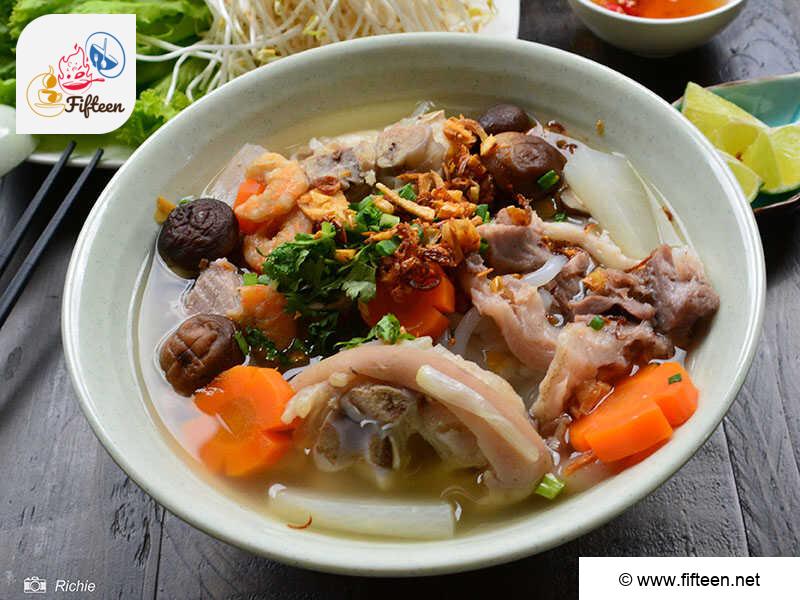
How to Save Bánh Canh Giò Heo for Later Use?
In case you already mix the noodles with the broth, I suggest finishing as quickly as possible. The combo doesn’t store well, even in the refrigerator.
But if you keep the noodles, the broth, and the pork in separate sealed containers, you can refrigerate them for 3 days. Actually, the broth can stay good twice that time.
But the best way is to use the freezer, which can extend the storage time up to 3 months.
What Do You Think About This Take On Vietnamese Thick Noodle Soup With Pork Hock?
Classic Vietnamese thick noodle soup is delicious enough, but a few changes can improve its deliciousness even more. You can cook this “bondage” version for your friends who have had experiences with the traditional dish and see how surprised they are at this new take.
Whatever you think about this recipe, feel free to leave a comment in the section below. If you have any questions, I will try to reply as soon as possible. One more favor: Share this post with everyone on your friend list. Thank you, and happy cooking!

Bánh Canh Giò Heo Recipe (Vietnamese Thick Noodle Soup with Pork Hock)
Equipment
- Pot
- Skillet
- Knife
- Chopping Board
- Tongs
- Ladle
- Slotted Ladle
- Cooking String
Ingredients
Main Ingredients
- 1.2 kilograms pork knuckles and pig trotters
- 500 grams pork ham
- 500 grams Bánh Canh noodles
Broth Ingredients
- 30 grams dried shrimp
- 300 grams shiitake mushrooms
- 1 sugarcane stalk
- 1 yam bean
- 1 salted radish (100 grams)
- 1 white radish
- 1 carrot
- 1 onion
Aromatics and Seasonings
- 30 grams shallots
- 30 grams garlic
- 5 teaspoons Vietnamese fish sauce
- 3 teaspoons salt
- 3 teaspoons brown sugar
- 5 teaspoons soup powder
- 20 grams rock sugar
- Olive oil
Garnishes
- Scallions, lime juice, fresh chili
- Herb garnishes: Lettuce, bean sprouts, coriander, etc.
Instructions
- Cut an onion in half, transfer to the oven, and bake for 10 – 15 minutes.
- Remove the bottoms of scallions and the roots of coriander. Finely chop scallion and coriander. Mince garlic and shallots.
- Dice the white radish and carrot into bite-sized pieces. Peel the yam bean, wash it with water, and cut into thick slices.Slice the lemon into wedges and finely chop the chili pepper.Rinse the salted radish carefully with water to remove the excess salt. Cut it into short slices. Score the husk of the sugarcane stalk and chop it into sticks.
- Remove the stems of the shiitake mushrooms. Cut half of them into small pieces. For the rest, make two incisions in the shape of a cross on top of each with a sharp knife.
- Chop the pork ham into medium-sized chunks. Debone the pork knuckles with a small sharp knife and fill them with pork ham.
- Marinate the pig knuckles and the excess pork ham with 2 teaspoons of soup powder and 1 teaspoon of brown sugar in 15 minutes.
- Tie each stuffed pig knuckle tightly with a kitchen twine.
- Purify the pork ham, pork knuckles, pig trotters, and bones by boiling them in hot water with some salt and scallion for 3 – 4 minutes.
- After that, put them in cold water immediately to prevent the meat from turning black.
- In a skillet, roast dried shrimp lightly until they emit a meaty aroma.
- Fill a stock pot with 4 liters of water. Add the meat, bones, yam bean, coriander root, sugarcane, salted radish, baked onions, roasted shrimp, and salt to the pot. Stew on medium heat for 1 hour to 1 hour 30 minutes.
- Constantly skim off foam to keep the broth clear.
- Remove all the ingredients from the pot, except for the stuffed pork knuckles.
- Add carrots and white radishes, then cook for 20 – 30 minutes on low heat. Season to taste.
- Saute minced garlic and shallots in hot oil until they turn golden and fragrant. Set aside.
- Saute the shiitake mushrooms in hot oil and possibly some water. Stir constantly for some minutes, then add them to the stock pot.
- Add the bulbs of scallions and Vietnamese fish sauce to the broth.
- Get the pork ham and stuffed pork knuckles out. When they cool down, cut the strings, then cut the pork into thin slices.
- Parboil the thick noodles in hot water for 1 minute.
- Add the noodles, pork, cooked pig trotters, and broth to your bowl. Garnish with fried shallots, scallions, chopped coriander, and black pepper.
Video
Notes
- You can dip the pork in a sauce made from fish sauce, lime juice, garlic, and fresh chili, for a more savory bite.


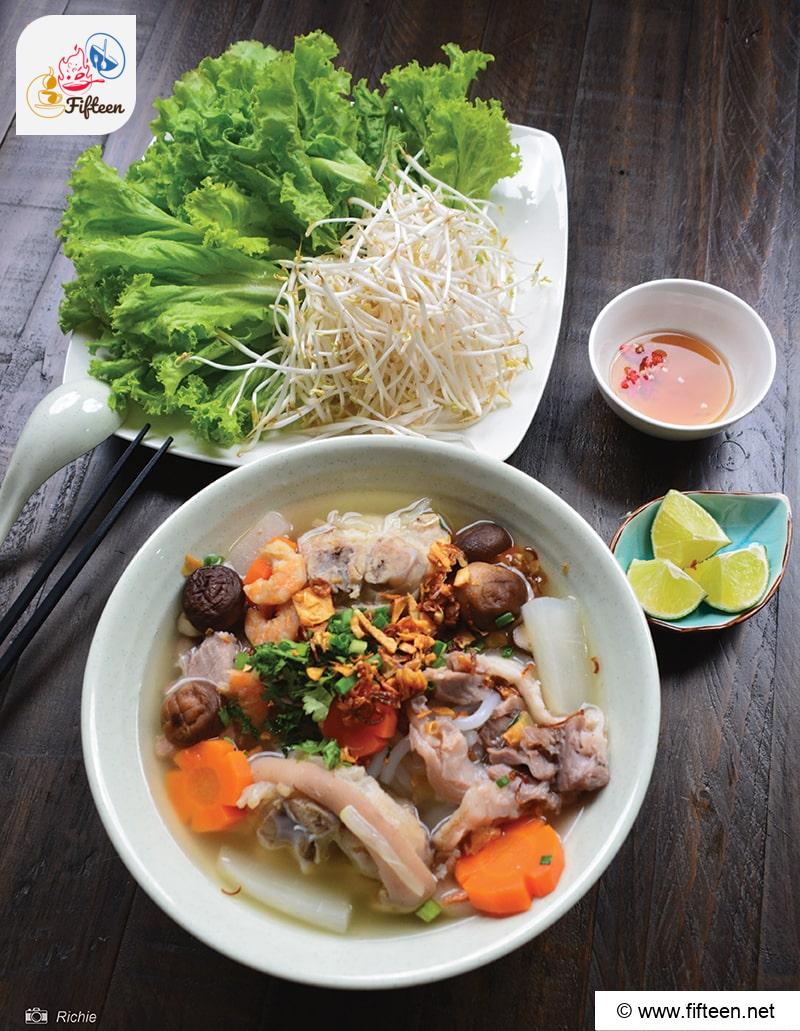
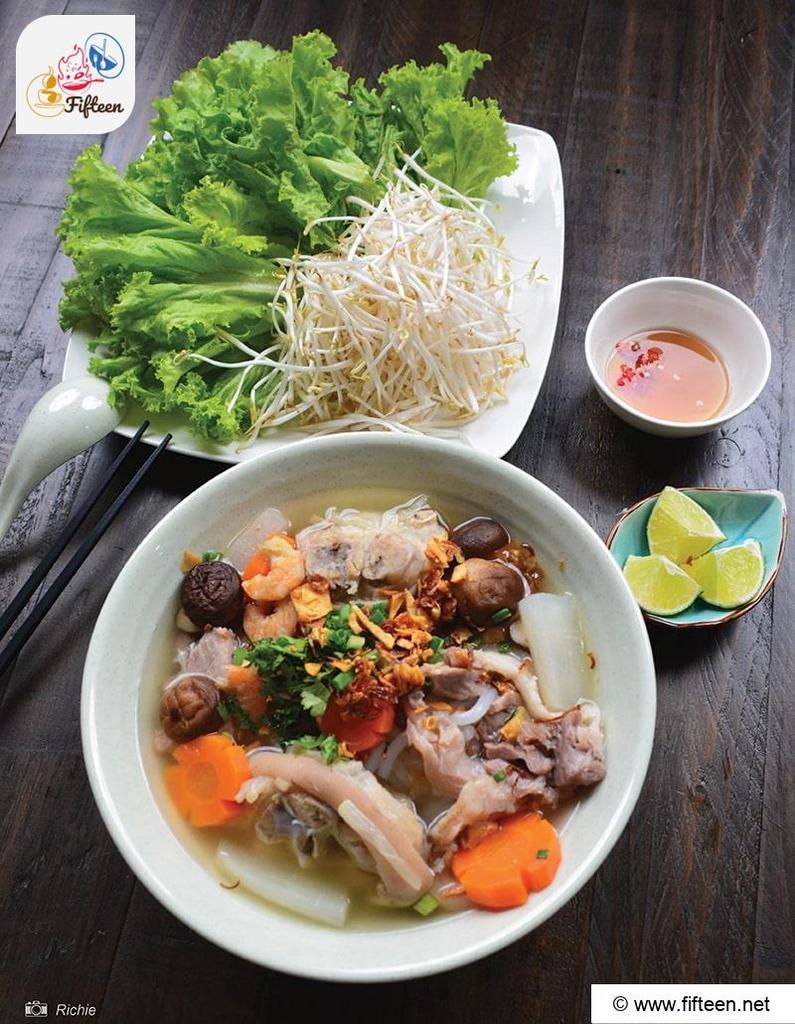
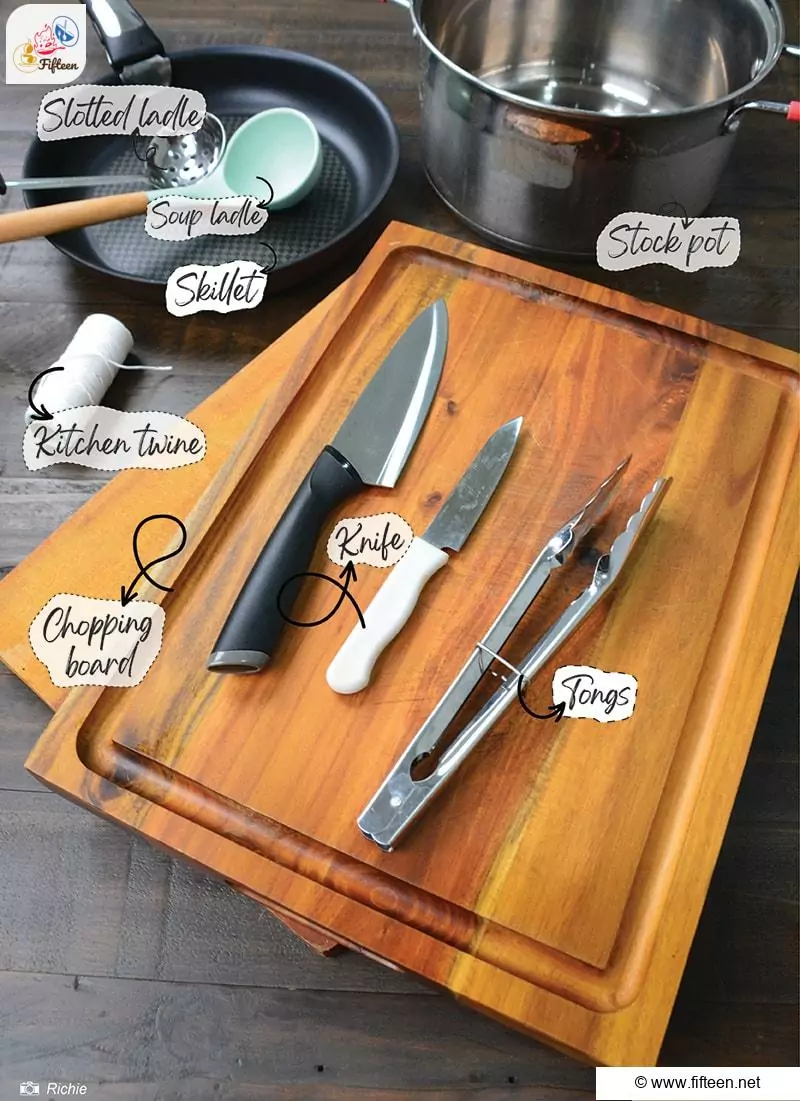
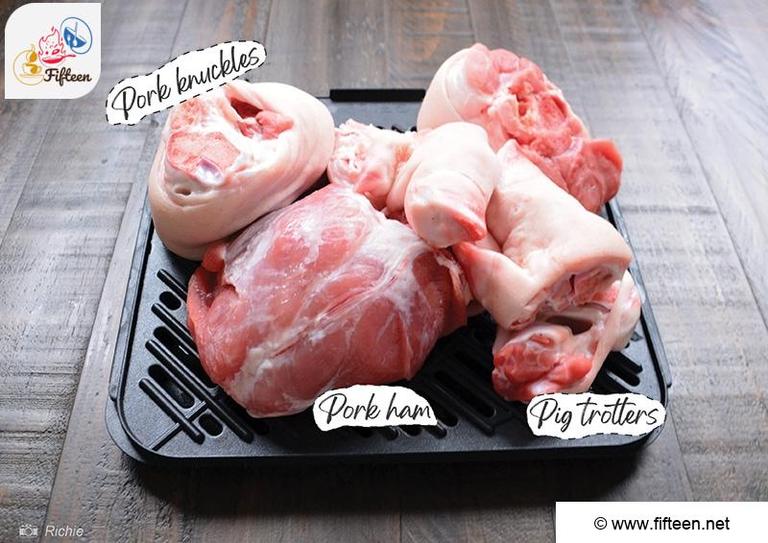
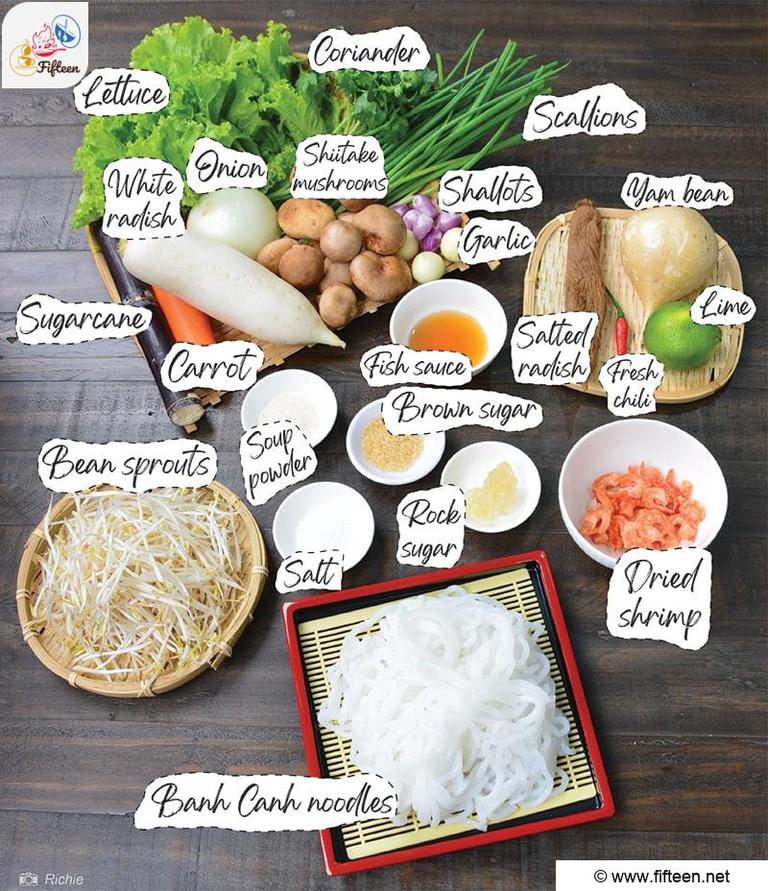
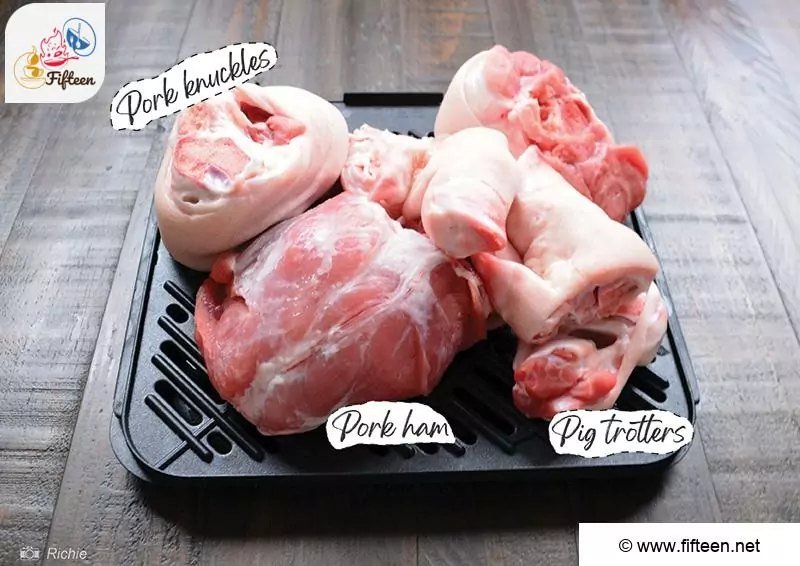
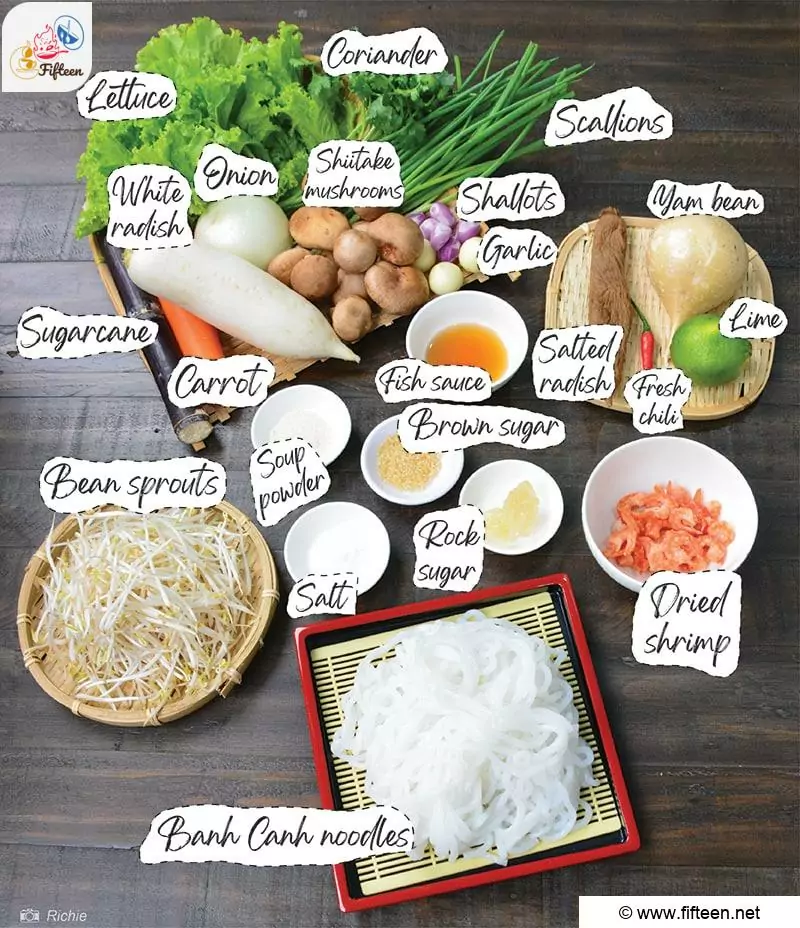
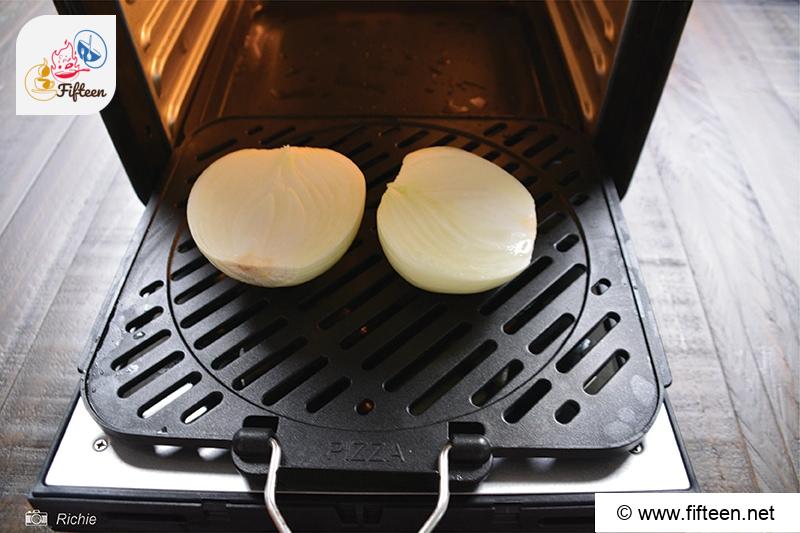
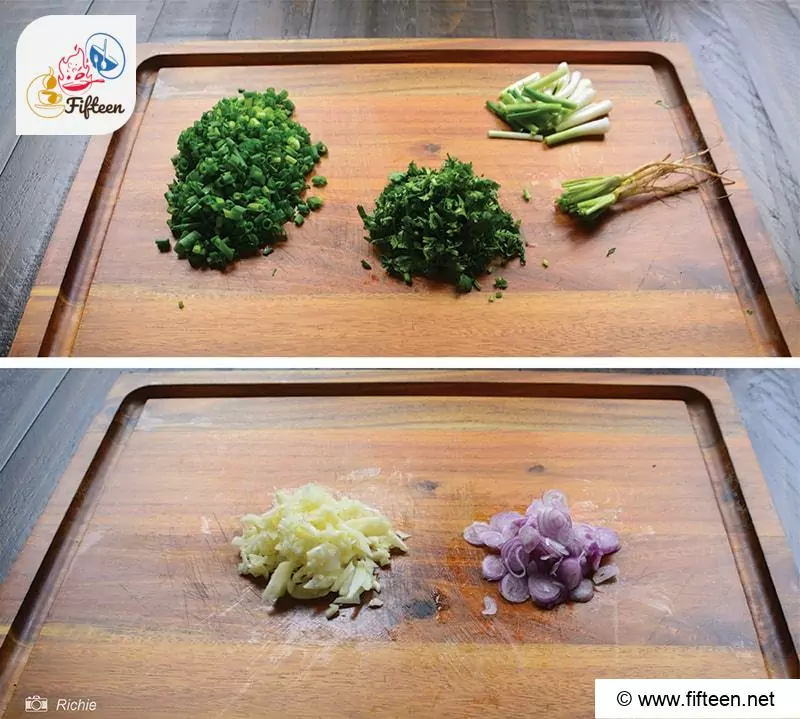
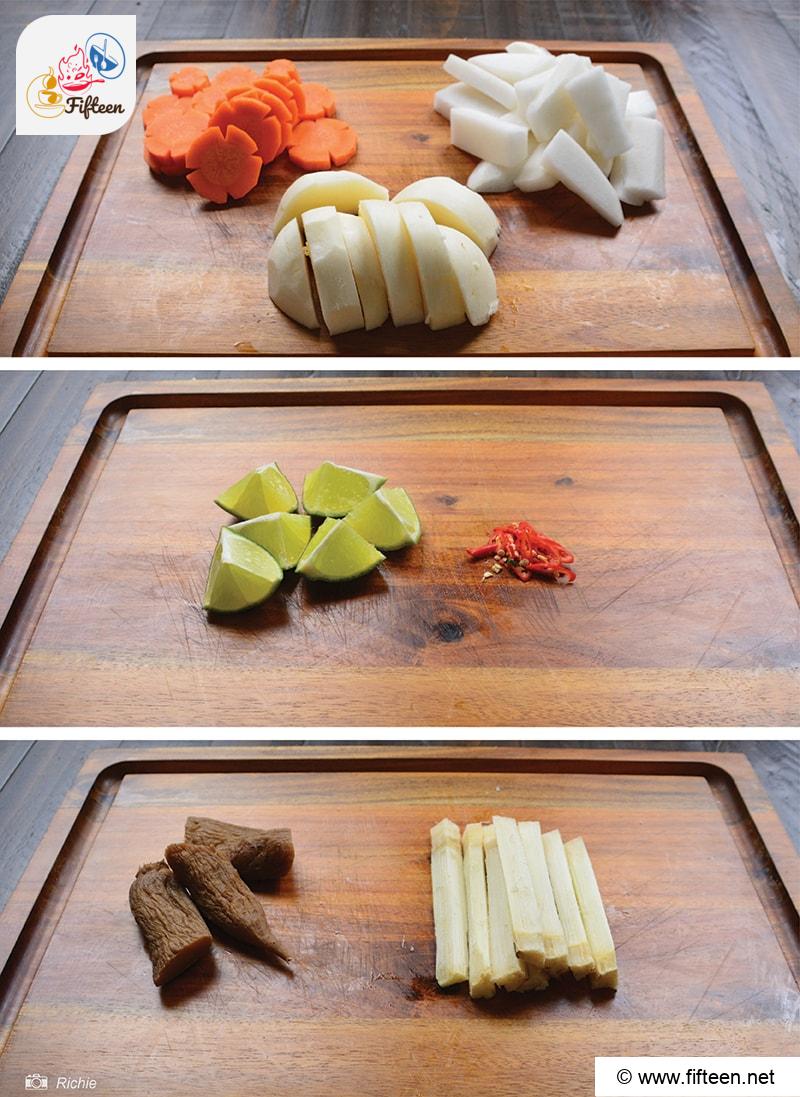
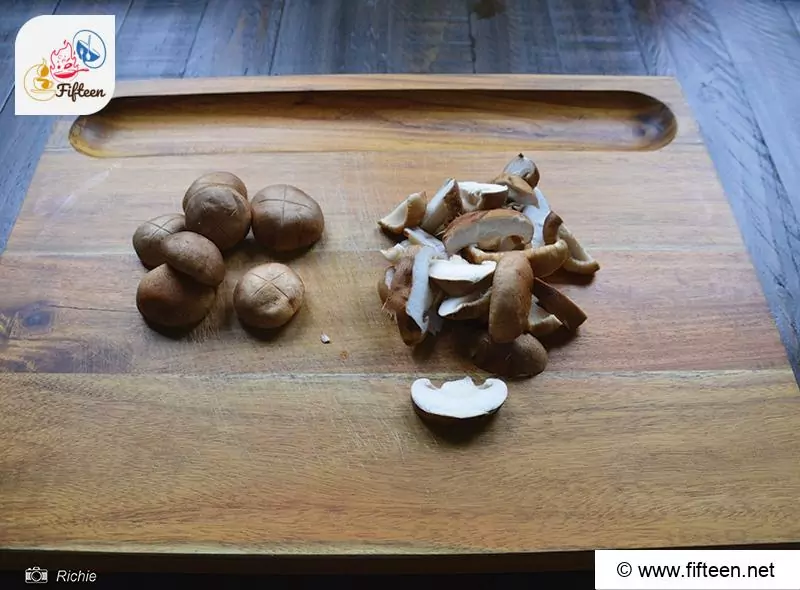
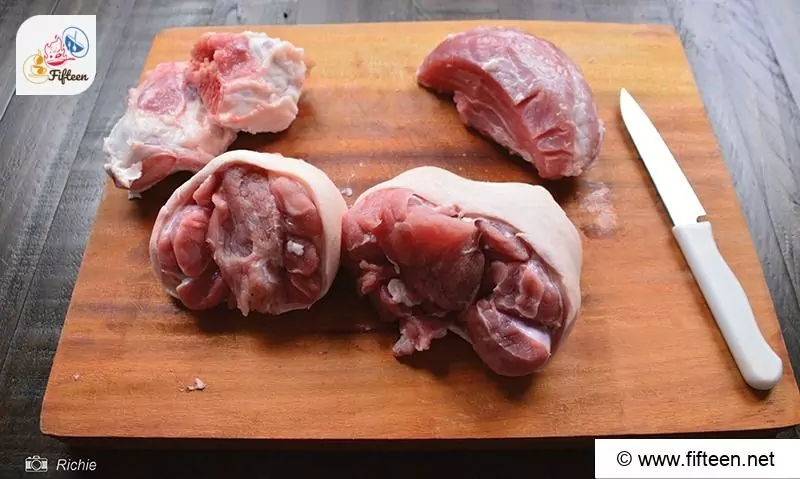
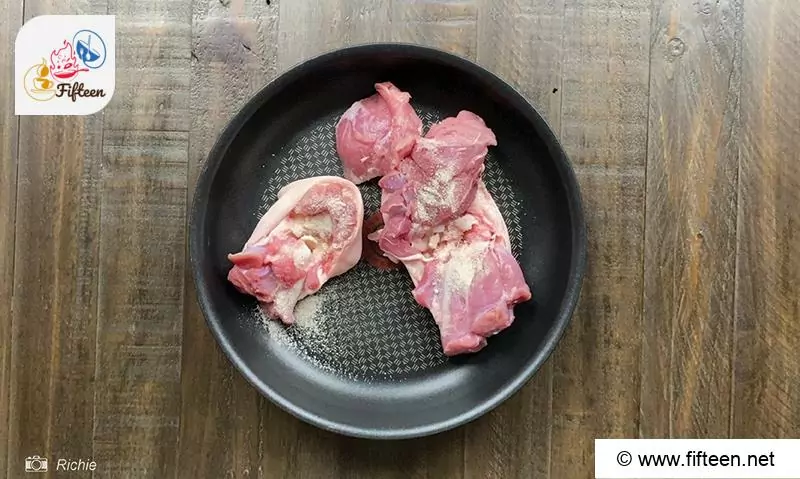
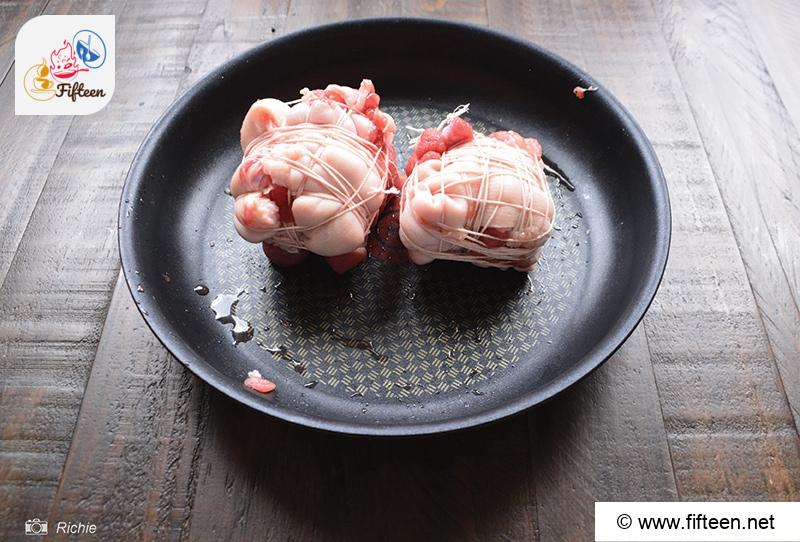
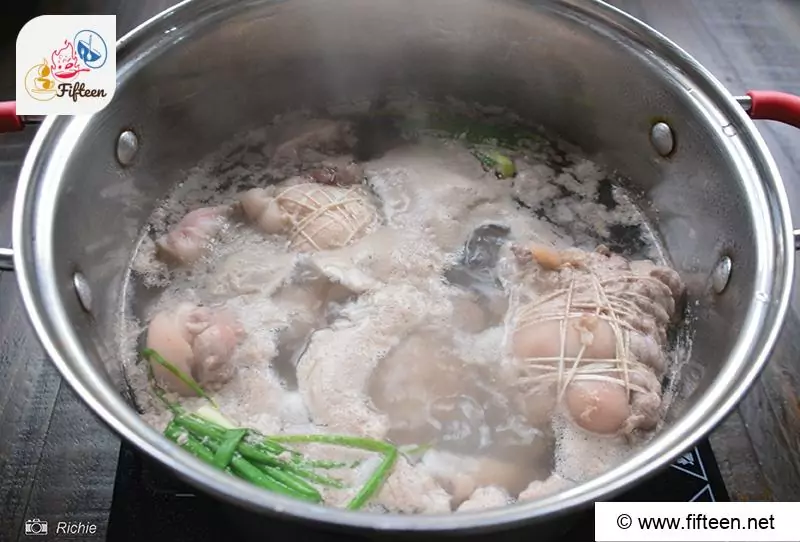
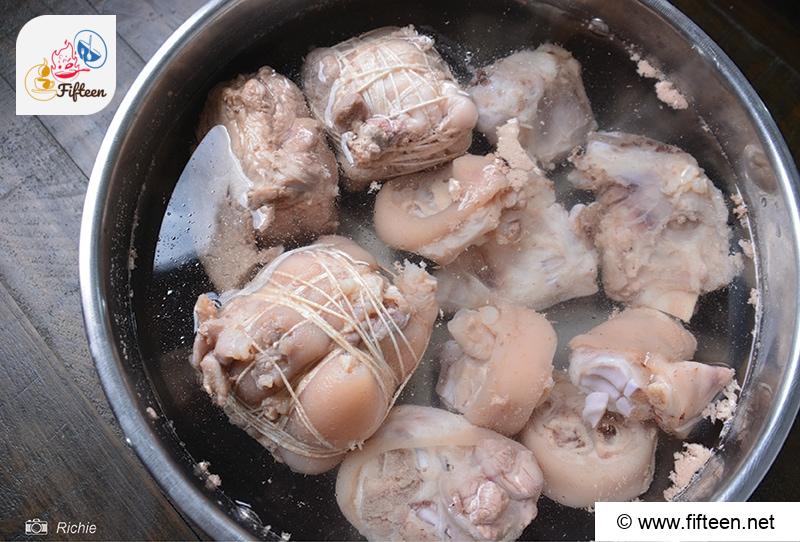
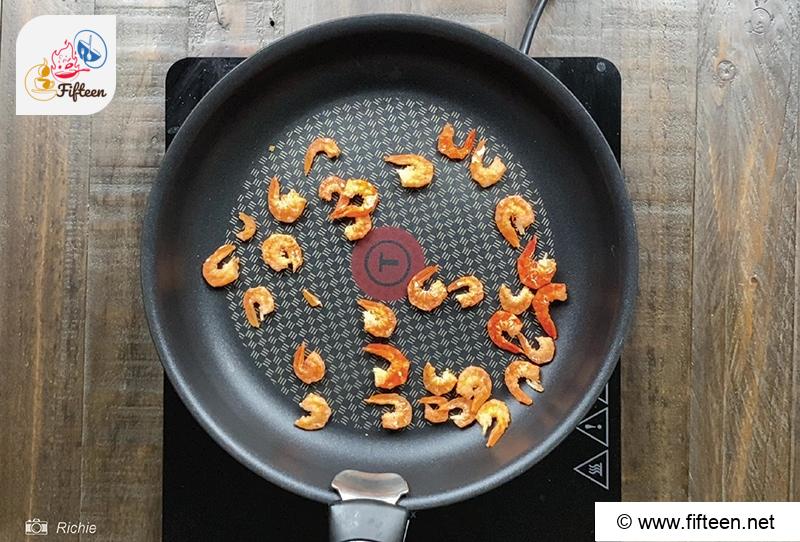
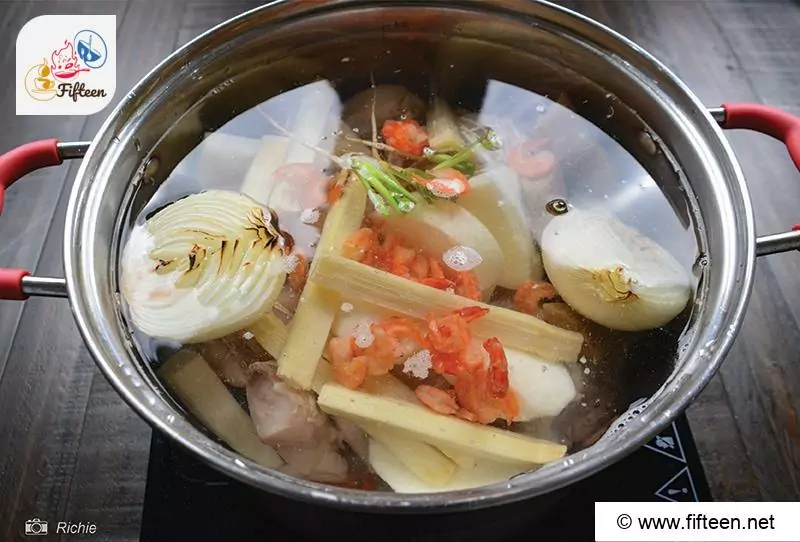
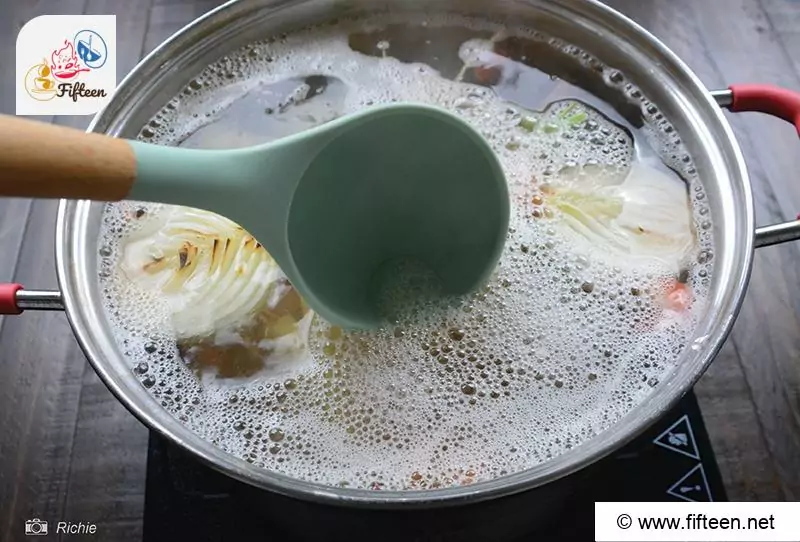
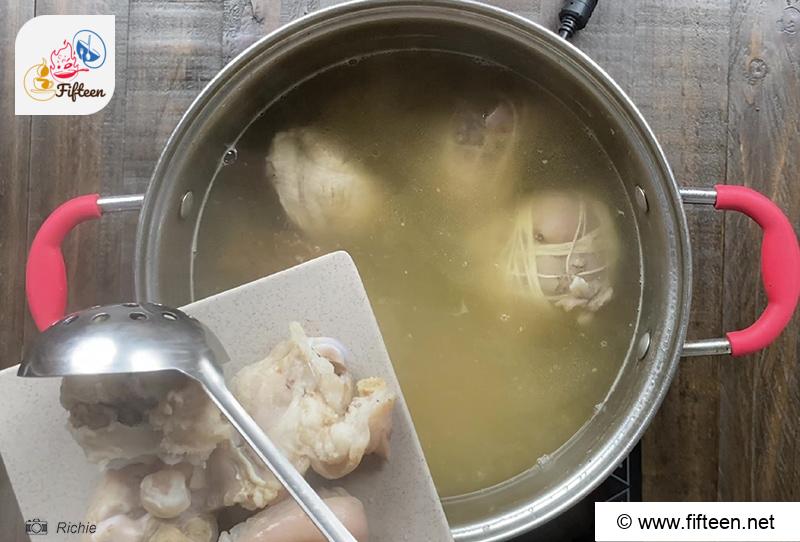
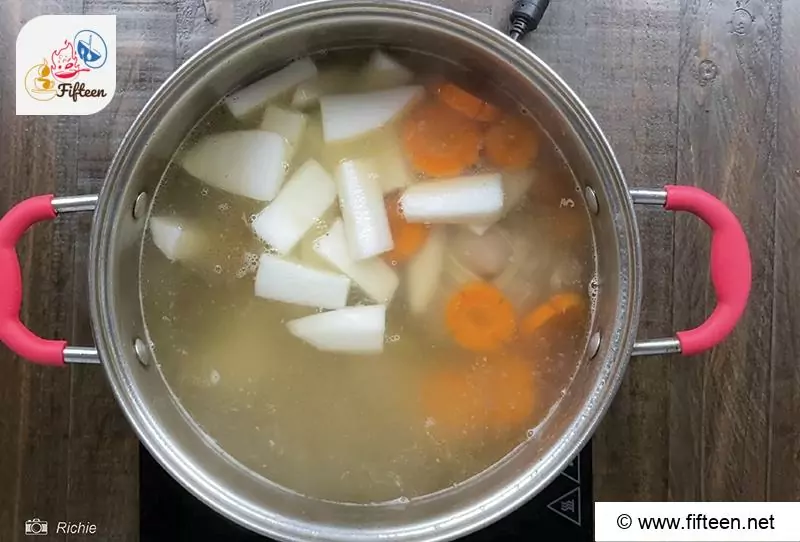
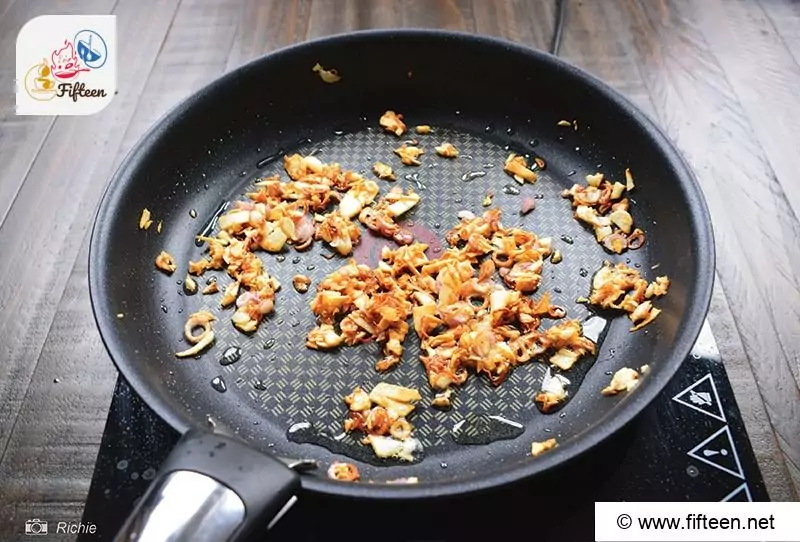
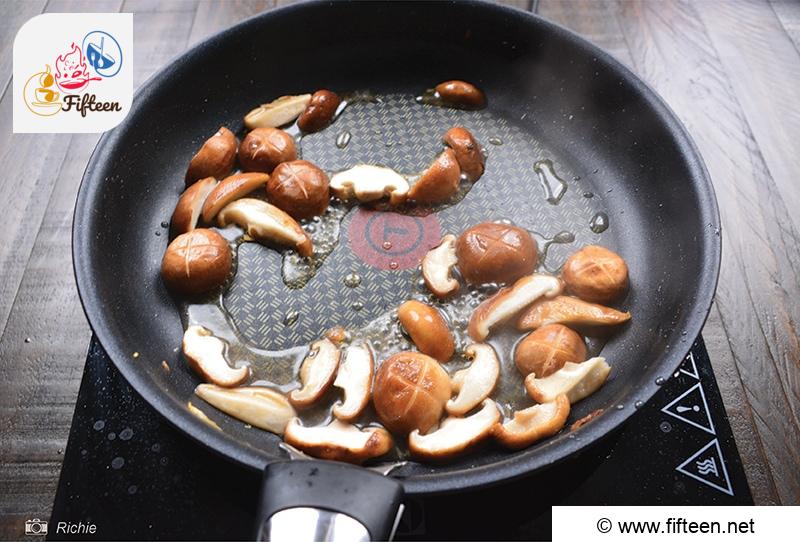
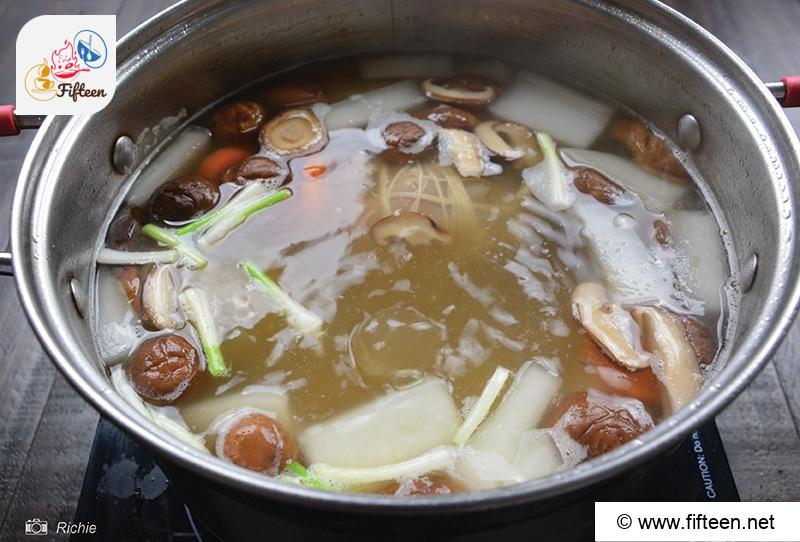
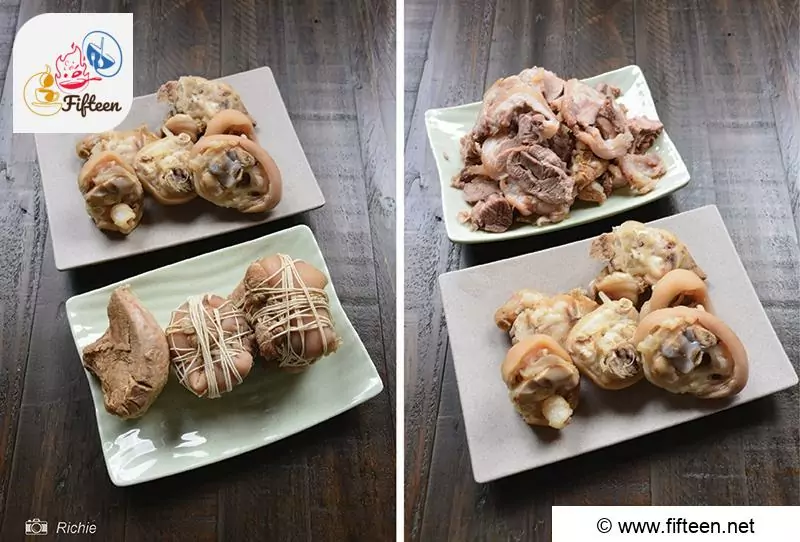
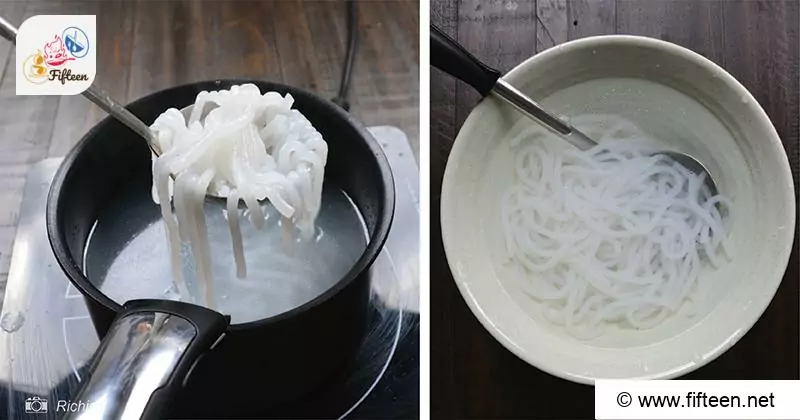
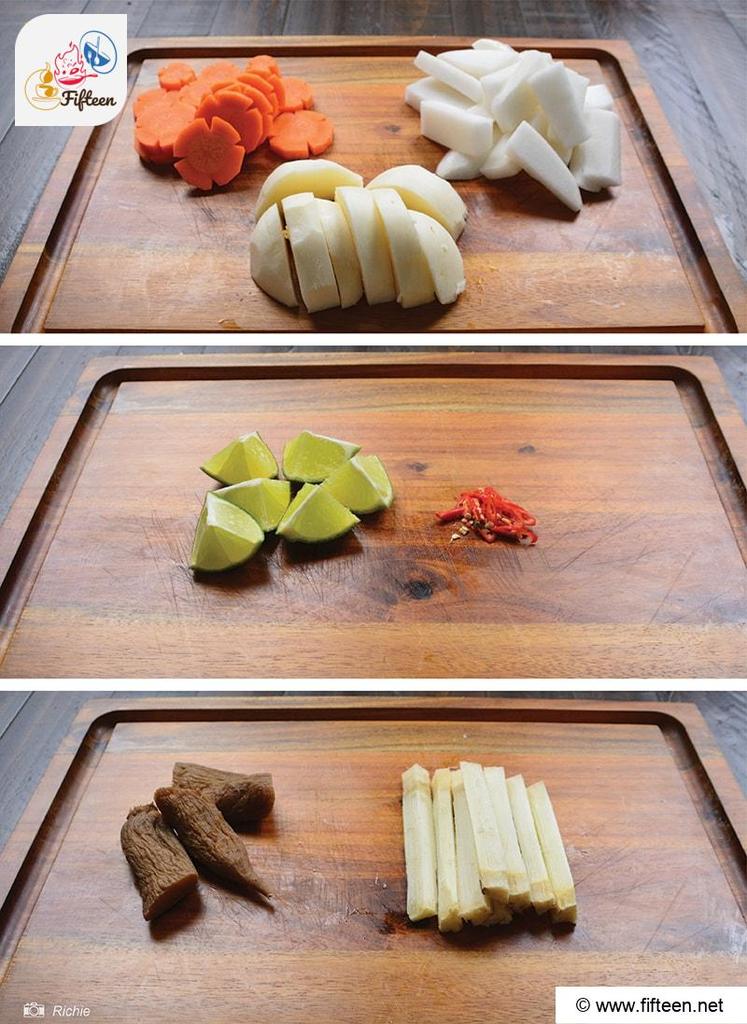
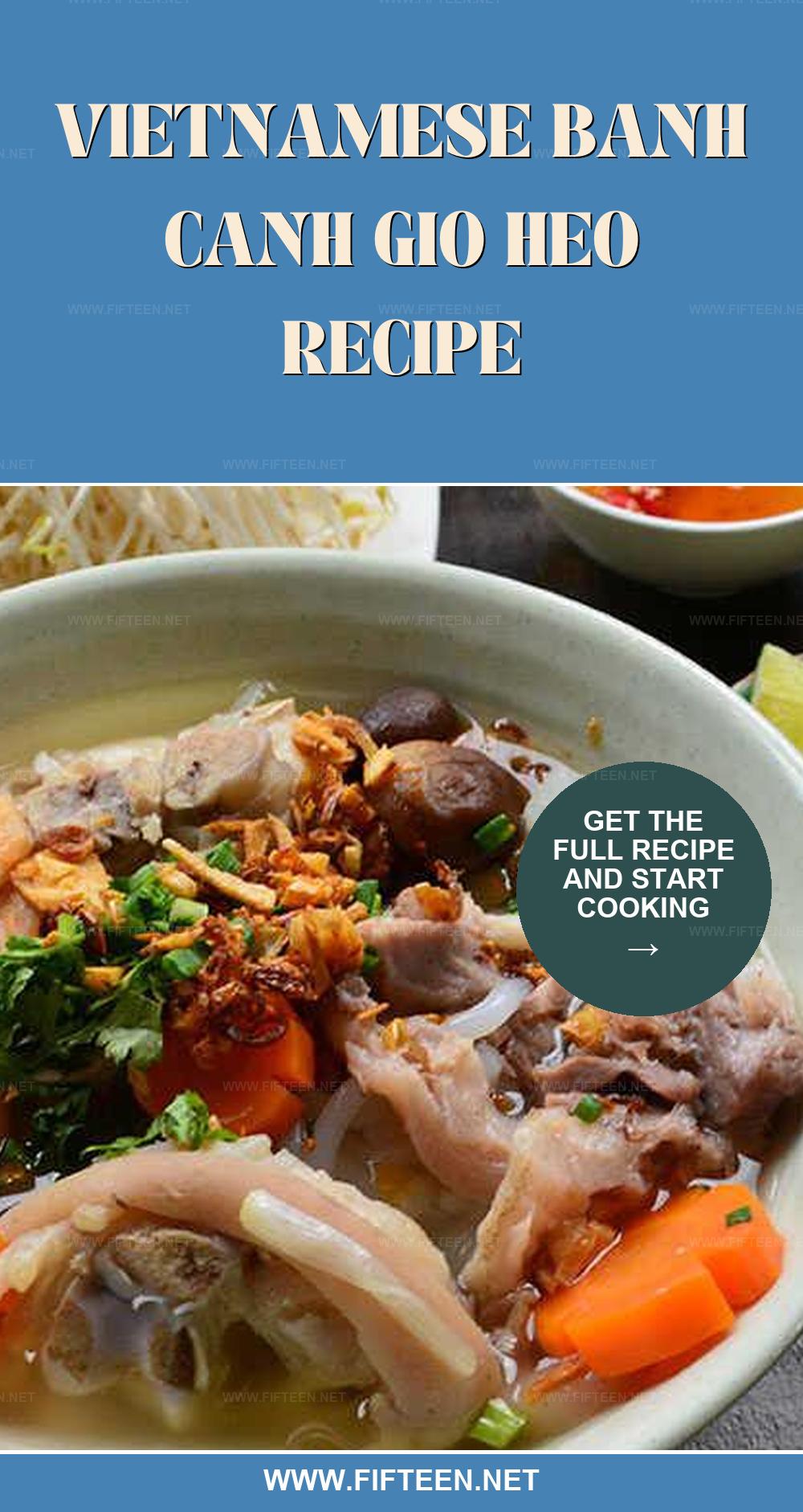
Richie
Content Writer
Expertise
Home Cooking, Meal Planning, Food Styling, Food Photography, Cooking-video Maker, Beverage Evaluation Expert
Education
Saigon Culinary Arts Centre, Ho Chi Minh City, Vietnam
Vietnam Australia Vocational School (VAAC), Hanoi, Vietnam
Richie, based in Ho Chi Minh City, Vietnam, is a dynamic Content Writer with a talent for capturing the essence of culinary art.
Richie specializes in creating visually appealing and tasty content, offering a new angle on Vietnamese and other culinary traditions. With a background in graphic design and a love for food styling and photography, he expertly combines beauty with food narratives, encouraging his audience to discover the culinary world through his imaginative perspective.